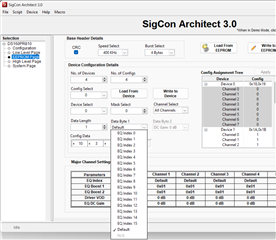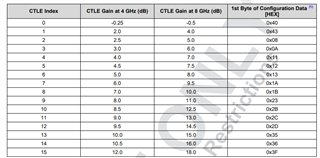Other Parts Discussed in Thread: DS320PR810, DS160PR810
Hello Team,
I am currently working on configuring the gain settings for a Redriver in my setup and have encountered some challenges. I would appreciate your insights and expertise in addressing this matter.

Setup:
- I am utilizing an SMA to PCIe card configuration.
- Giving external 12V power supply to Redriver EVM.
- Sending the input signal from DSO and monitoring the output in Spectrum Analyzer.
Issue: Despite applying gain to the redriver, I am not observing any noticeable differences on the output side.
Are there any other factors I should consider for achieving the desired output? or using this setup can i check the gain changes?
Thanks
Sandhya




